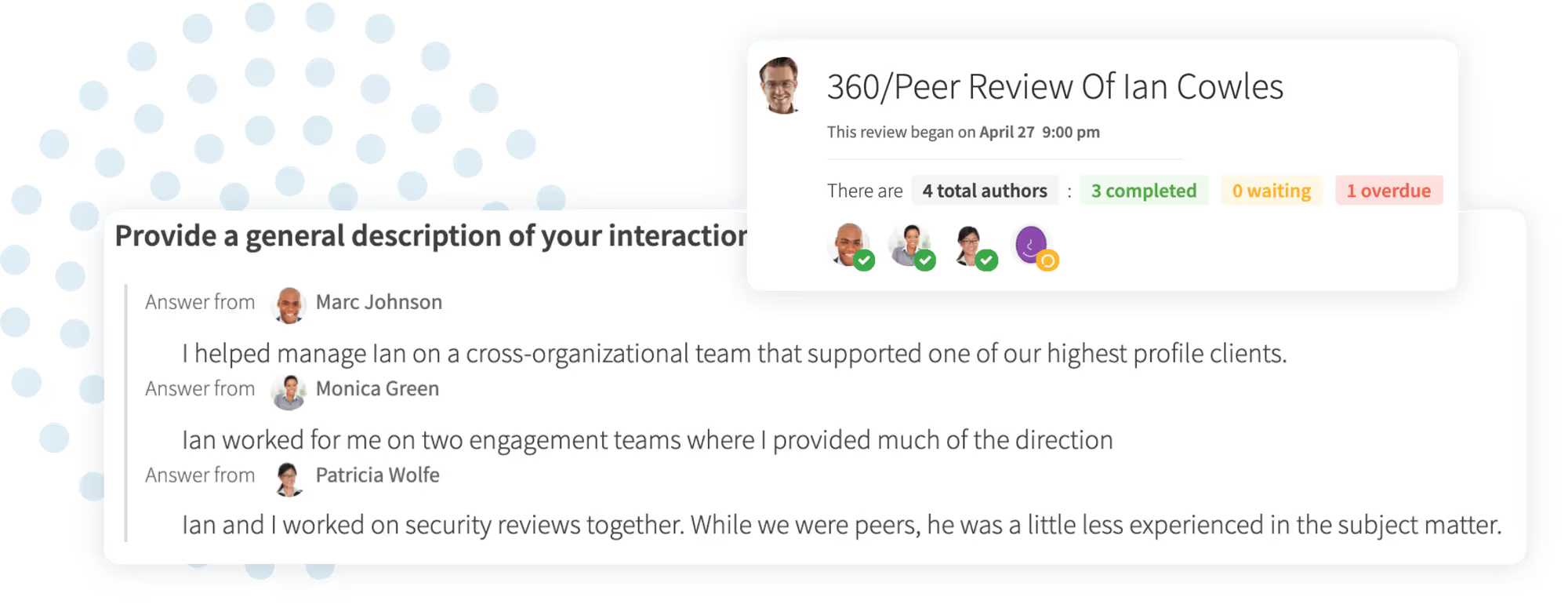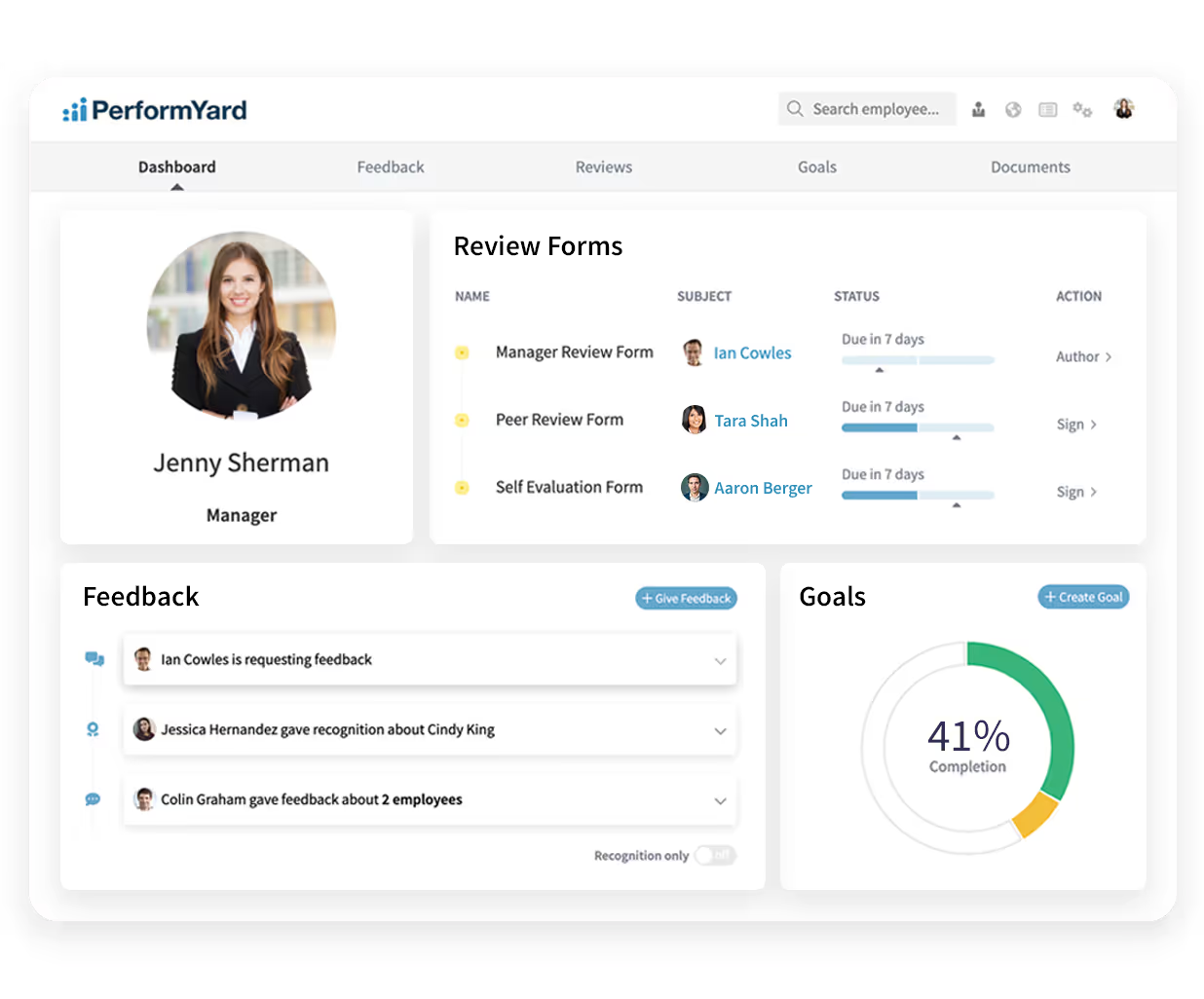What Are the 3 Types of Performance Management Systems?
Performance management is a process that measures and develops employee and team performance. It ensures that the organization meets its strategic goals. Performance management has evolved from traditional systems which had annual reviews. Today, companies use technology to conduct performance reviews more frequently. The old performance systems had problems, including subjectivity, bias, and a one-size-fits-all approach.
These issues negatively impact employee engagement and limit performance alignment with organizational goals. Therefore, many companies had to update their systems. In 2014, Deloitte found that 70% of surveyed companies were updating or reviewing their performance systems.
Why is performance management important?
Performance management is crucial to the success of organizations. A recent study showed that productivity increases by 31% when performance review software is used to drive success. Employees are also ten times more likely to see a path in their company. This leads to better employee retention. Companies that carry out continuous performance management also outperform their competition.
Performance management serves a vital purpose for top management. Goal management software can link company goals to the responsibilities of individuals and teams. Performance management also influences administrative decisions. These decisions include salary increases, promotions, retention, and termination. It informs management on how employees are doing and areas of improvement required. Performance management also helps make decisions about staff development, coaching, and training. New employees learn valued behaviors from performance management feedback during onboarding.
The Three Examples of Performance Measurement Systems
Performance measurement systems are metrics that quantify the efficiency and effectiveness of actions. In the workplace, the outputs and efficiency of employees are quantified and assessed. This allows managers to measure an employee’s performance based on the company's goals. For example, a customer service employee's performance is measured against certain metrics. These include customer satisfaction, response time, and resolution rate. They show how efficient and effective the employee is.
There are three major systems used in measuring performance:
- 360-degree Feedback System
- Management by Objectives
- Key Performance Indicators
The 360-degree Feedback System
The 360-degree feedback system gets feedback from all the employee's co-workers. These include the manager or supervisor, the peers and the subordinates (direct reports). It is also known as the multisource assessment. It rates all the employee’s competencies, skills, and behaviors. The information provided will give a clear picture of strengths and areas needing improvement.

Pros and Cons of the 360-degree feedback system
Pros
- The 360-degree feedback system provides a well-rounded view of the employee’s performance.
- It gives a clear picture of strengths and areas where development is required.
- It is useful in leadership development because it comprehensively assesses a person’s skills and competencies at work.
- It helps to boost job satisfaction and employee retention because employees' feedback is highly regarded and effectively addressed
- 360 feedback software helps to foster professional development when areas of weakness are pointed out. Appropriate development programs and training are also provided.
- Feedback from several sources is usually more accurate and addresses the necessary concerns.
- 360-degree feedback has fewer biases because it comes from various sources. This enhances diversity and inclusion.
Cons
- The 360-degree feedback is time-consuming and usually takes longer to implement for both HR and employees.
- The focus on areas of development might take away recognition of employees' strengths. This could cause disengagement at work.
- Some raters may not provide honest feedback if they fear their responses could put them at odds with the ratee. This is especially true if the ratee is their superior.
Management by Objectives
Management by Objectives measures employees’ output against organizational goals to test job performance. MBO links employees' objectives to the company's main goals. This shows employees how their work is connected to the company's success. MBO provides an alignment between what employees do and the outcome for the company. For example, Hewlett-Packard implemented the MBO model by ensuring company objectives were implemented at every managerial level. This created a system of integrated objectives within the company.
Pros and Cons of the Management by Objectives System
Pros
- For Management by Objectives to be effective, there must be synergy to implement the company’s goals. MBO fosters teamwork and communication.
- It brings clarity to the entire hierarchy in the company.
- When employees handle and implement complex objectives, they build more skills. They also deliver better results.
- Employees get a sense of satisfaction from seeing how their work affects the company’s bottom line.
- It provides a framework for managers to negotiate with employees. It sets a course of action and the objectives to be met.
Cons
- MBO implementation may put employees under a lot of pressure. The desire to meet set goals may negatively impact work-life balance.
- Goals are tailored to the skills and competencies of each employee. These goals may not include the career development plans of individuals.
- When employees feel pressured to meet company goals, they may use shortcuts to reach their targets, compromising quality.
- MBO pays a lot of attention to company goals but may neglect other areas of operations.
Key Performance Indicators (KPIs)
Key performance indicators measure the company’s success against its goals or objectives. KPIs provide the targets to aim for and what to evaluate during implementation.

There are two types of KPIs
- Quantitative
- Qualitative
Quantitative KPIs are those measured using metrics, and examples include:
a) Number of customers served by an agent
b) The company's sales revenue per employee.
Qualitative KPIs are descriptive and comprise characteristics, attitudes, or opinions. Examples of Qualitative KPIs are:
a) The measure of employee or customer satisfaction.
b) How likely it is for a customer to make repeat purchases
For KPIs to be effective, they must be:
- Data Driven: KPIs should be based on the relevant data. An example is when a company uses KPIs to measure candidate engagement rates. The KPIs here will help to understand the effectiveness of their recruitment processes.
- Actionable: KPIs should be practicable. The time of implementation should also be specific. An example is selling 1 million units in a month.
- Aligned to Strategy: KPIs must align with the goals and objectives of the business and conform to the strategy. For example, a college might decide to increase student enrollment by 20% over two years. Examples of KPIs to track are inquiry-to-visit ratio and average online search position. Additionally, lead conversion rates are also an important metric to follow.
- SMART: KPIs should follow the SMART framework to be effective. They should be specific, measurable, achievable, realistic, and time-bound.
Pros and Cons of the KPIs system
Pros
- When KPIs are in place, outcomes and results can be easily measured.
- With the right KPIs, you can assess performance on the dashboard and monitor progress in employee activities.
- KPIs provide clarity and help in decision-making. Managers can see outcomes, such as revenue growth or employee productivity. They can use this to assess strengths and weaknesses in the company.
Cons
- KPIs are usually short-term goals and teams may lose sight of long-term vision when overly focused on their KPIs.
- KPIs can stifle creativity because they are usually meant to be followed strictly. This may prevent employees from coming up with new ideas.
- When there are too many KPIs, tracking them all can become overwhelming.
The 3 Rs of Performance Management
Recognition
Recognition is acknowledging and appreciating the achievements and contributions of employees in the workplace. Recognition helps the employee feel connected to the workplace and improves employee engagement. It boosts morale and productivity and helps to improve the company’s culture.
Employee recognition can be formal or informal. Formal employee recognition includes employee recognition wall, Employee of the Month Awards, service awards, bonuses, and cash gifts. Informal employee recognition includes verbal praise, thank-you notes, and checking up on employees.
Responsibility
Responsibility at work includes all the assigned tasks and duties of an employee according to the job description. Employees must take ownership of assigned tasks and ensure that the tasks produce the expected results. For example, HR employees handle tasks like recruitment and onboarding. They also manage benefits and employee engagement programs.
Results
Results are the outcomes of performance. They may include data, reports, and records. They can also include any other information or products made at work. They're referred to as deliverables or products.
3 Ps of Performance Management
People
People are at the center of all performance management processes. The goal of performance management is not just to measure performance. It also aims to improve the skills and competencies of employees. Continuous feedback software can help employees get the training they need to build new skills.
Process
The performance process consists of four main steps.
- Planning, where expectations are established in line with the company’s strategic plan.
- Monitoring, progress is assessed and help is provided help to employees who need it. This could be in the form of employee coaching and development programs.
- Reviewing results of performance.
- Rewarding employees for their successes and achievements.
Performance
When the company hires employees, they should learn about the company’s expectations for work quality. This is usually done during onboarding. This is where employees learn the duties and goals for their positions and roles. Success criteria and methods to achieve them should also be provided at this stage. Employees should also learn their organization's performance standards and how performance is measured in their roles.
What are the 3 Performance Elements?
Task performance
Task performance describes the core job responsibilities of an employee. It is also known as the “in-role prescribed behaviour”. This includes the duties and activities an individual carries out in an organization. Task performance involves all specified and expected deliverables or outcomes and their quality or quantity. Through task performance, employees produce goods or services specific to their jobs. Here, they are also required to show the necessary technical skills.
Contextual performance
Contextual performance is when an employee goes beyond the assigned job responsibilities. Here, the employee displays discretionary, extra-role behavior. This behaviour requires initiative, and because it is not an expected responsibility, it is not rewarded. Examples of contextual performance include:
- Volunteering for extra responsibilities at work.
- Coaching younger workers
- helping colleagues
- Coordinating employee resource groups.
Adaptive performance
Adaptive performance is the ability of an employee to adjust and remain effective in a changing environment. Employees may need to learn new tasks, handle crises or deal with ambiguities. Research has shown that when employees can adapt to changes at work, they are better able to handle stressors. They can use effective coping strategies. These abilities can lead to positive changes in the organization.
Conclusion
Effective performance management is crucial for organizational success. It involves a systematic approach to improve individual and team performance. Companies need to assess the three types of performance management and decide which ones will best serve them. Attention should also be paid to how recognition affects employee performance. When employees understand their duties, they are more likely to produce the expected results.
Organizations can also foster a culture of continuous improvement. They can do this by putting the principles of performance to work. With this, employees can deliver results, go the extra mile, and adapt to changes.

A strong performance management software system improves productivity and efficiency. It also boosts worker satisfaction and retention. This ultimately creates a thriving and dynamic workplace.


